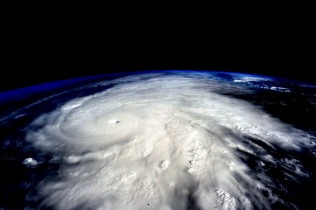
Despite the 2015 hurricane season coming to a close in the Pacific Ocean, it continues to be a hot topic amongst both meteorologists and civilians. Setting records in a variety of areas and threatening popular tourist destinations along the Pacific coastlines, it’s certainly a season that will go down in the record books.
What Happened?
When Hurricane Patricia made both literal and figurative big waves in the Pacific this October, it’s no secret that the this was the most active hurricane season in the Pacific Ocean on record. At one point in July, the Pacific Ocean was playing host to six separate storms, all spinning at the same time.
Is this kind of activity completely unheard of? No. Is it exceedingly rare? Yes.
What is unheard of is the high number of Category 4 or 5 (sustained winds of at least 130 mph) hurricanes that formed in the eastern Pacific Ocean in 2015, which topped out at eight, an all-time record.
The central Pacific also set a record this year with 14 named tropical storms or hurricanes.
All of this activity in the Pacific is in direct contrast to the Atlantic, which was surprisingly quiet. This leads to the biggest question: why was the Pacific Ocean’s season so intense?
Why Did It Happen?
For starters, 2015 brought a strong El Nino season in the Pacific Ocean, likely one of the most important factors in the active season (as well as being partially to blame for a threatening global coral bleaching event currently in progress).
Strong El Nino years provide an incredible fuel for active hurricane seasons. This has been instrumental in providing the warm sea surface temperatures that really aid in developing hurricanes, as well as reducing wind shear which might otherwise inhibit the growth of hurricanes.
Now take those warm sea surface temperatures and throw energy waves and winds into the mix, both gearing towards thunderstorm and low pressure development.
The first of those two factors, energy waves, is a product of a phenomenon known as the Madden-Julian Oscillation (MJO), which moves eastward triggering wet and dry seasons across the Pacific. This season it just so happened that the MJO was making its way across the central Pacific in mid-July, supporting strong upward motion and the development of thunderstorms right in the midst of hurricane season.
And finally, the presence of strong westerly winds near the surface this year, in contrast to the typically easterly winds that blow near the equator (specifically, northeasterly north of equator and southeasterly south of the equator), were helping to boost any developing low-pressure systems, which turn anti-cyclonically/clockwise in the Southern Hemisphere.
What Has This Affected?
With so many vacation spots laying along coastlines, it’s no surprise they are constantly in danger of being pummeled by a hurricane, be it peripherally or by a direct hit. A number of areas in southern California and western Mexico saw the greatest widespread effects of the active season, the primary damaging force being flooding caused by storm surges and excessive rainfall amounts.
Hurricane Patricia was the most notable of the 2015 Pacific season, both in terms of meteorological records it set for strongest hurricane winds overall (200 mph) and at landfall (165 mph), and in terms of the threat it posed to the coast of Mexico.
Luckily, the hurricane made landfall in a sparsely populated area and was soon after crippled by its interaction with a large mountain range. Had the hurricane hit the coast a little further west, it could have spelled disaster for popular vacation destinations such as Puerto Vallarta. However, there were still several smaller areas of residents that did experience heavy damage from the storm.
Hawaii exited the 2015 hurricane season feeling a little worn out after being under potential threat by nine different storms, although none of them ultimately made landfall on any of the islands. Still, Hawaii did not escape the impact of having such a great number of storms near their coastlines, setting an all-time record for the wettest August and requiring increased numbers of beach rescues due to high surf conditions.
As winter approaches the Northern Hemisphere, an increase can be heard in the chorus of voices bemoaning their lives in a seasonally cold climate. Still, the owners of those voices might want to remember that even life in tropical paradise can come with its own price tag!
Read Ethical Traveler's Reprint Policy.
